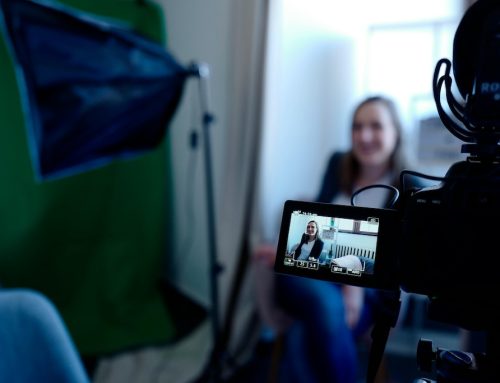AI is no longer the new kid on the block in digital marketing. It has already had a disruptive, transformative impact. For many brands, it’s the engine driving the vehicle.
Here in 2025, it remains anything but clear how further adoption will impact social media spaces; this is only the tip of the iceberg. Will people be spending more time on social because the content is so interesting, novel, and compelling? Will trust issues undermine everything and lead people to shun popular platforms? Most importantly, what does this mean for business owners and marketers who are juggling multiple social media platforms in their marketing stack?
We don’t have all the answers, nobody does, but it is safe to say that AI tools have already changed how brands use social media platforms, and even safer to say that it won’t stop here. Let’s dig a little deeper.
AI in Social Media: What It Actually Means
AI in social media refers to the use of artificial intelligence, machine learning, natural language processing, and image recognition to analyze, generate, and manage content across platforms like Facebook, Instagram, X (formerly Twitter), LinkedIn, TikTok, and beyond. The goal? To automate, optimize, and personalize everything—from post timing to messaging tone.
But here’s where things get more interesting: In 2025, 71% of all social media images are now AI-generated, according to Forbes. Think about that. The majority of visual content in your social feed may not have been created by a person at all.
That stat alone raises essential questions: Are users connecting with brands or with bots? What’s the line between helpful automation and inauthenticity? And perhaps most pressingly: Is it still “social” media if humans are no longer at the wheel?
Where AI Is Showing Up in Social Media Marketing Campaigns (Right Now)
AI used to be the back-office intern—quietly automating what marketers didn’t have time for. In 2025, it’s wearing the headset, holding the mic, and headlining the strategy meeting. Whether you’re planning a full-scale product launch or just trying to keep your brand’s voice consistent across five platforms, AI is now embedded in every layer of execution.
Want to create content fast? Generative AI can now pull from existing brand collateral, trending keywords, and your competitors’ best-performing posts—and spin it all into a carousel that looks like it came from an agency (in under ten minutes). Captions? Done. Hashtags? Optimized. Emojis? Tastefully deployed. It’s not just automation; it’s composition.
But velocity means nothing without precision. That’s where AI algorithms step in, analyzing when your audience is scrolling, clicking, swiping, and ghosting. The result: scheduling systems that don’t just post—they orchestrate. That Tuesday 2:17 PM slot? It’s not random. It’s data-driven—and it hits.
Then comes the listening side. This is where AI’s value really compounds. We’re not talking basic alerts for “brand mentions.” We’re talking AI-powered social listening that taps into the emotional temperature of your audience. Tools now use sentiment analysis to decode tone, irony, and sarcasm in comments—yes, even the dry ones. If your campaign is falling flat, you’ll know before the numbers tank. And if you’ve accidentally touched a cultural nerve? AI won’t just tell you—it’ll suggest how to pivot your messaging in real time.
And here’s where it gets truly predictive. Social media analytics used to mean exporting a spreadsheet and hoping for the best. Now, AI gives you forward-looking insights based on pattern recognition across campaigns, industries, even social media conversations your team hasn’t noticed yet. It doesn’t just tell you what happened. It tells you what’s coming.
You’re no longer stuck reacting. With the right AI system in place, you’re steering with both hands on the wheel—and seeing around corners.
The Elephant in the Room: Authenticity & Misinformation
Of course, it’s not all rainbows and retweets. Let’s talk about the trust problem—the one no one in the boardroom wants to lead with, but everyone’s thinking about. The more content is generated by machines, the more we lose the ability to tell who—or what—we’re actually engaging with. That’s not just a marketing concern. It’s a cultural one.
Today, AI-generated content is indistinguishable from human-made. And while that’s impressive, it’s also…a bit unsettling. We’ve reached a point where a fake influencer, crafted entirely from code, can launch a skincare line, rack up millions of followers, and trigger a controversy—all without existing. (Yes, Lil Miquela, we’re looking at you.)
Now mix in deepfake video content, bot-fueled comment threads, and algorithmically-driven fake news campaigns—and you’ve got a cocktail that could derail public trust not just in brands, but in institutions. These are no longer sci-fi hypotheticals. These are active threats with far-reaching implications, especially in democratic societies where public discourse plays a real role in shaping policy—and perception.
But misinformation isn’t the only issue. There’s also the subtler erosion of tone, of identity, of feel. When everyone uses the same AI tools, everyone starts to sound the same. And if you don’t maintain a strong, human-centered brand voice? You disappear into the white noise of the feed.
Then there’s hate speech—the kind that slips past filters because context is hard, and nuance is harder. AI moderates faster than any human team ever could, but even the best AI systems still miss subtext. And when you’re managing content across multiple social channels, those blind spots can add up to serious reputational risk.
Lastly, let’s talk data privacy. AI runs on data—your customers’ data. The more it knows, the more it can personalize. But consumers aren’t passive anymore. They want to know what you’re collecting, why it matters, and what they get in return. Brands that shed light on their practices and build transparency into their tech stack will be the ones that keep trust intact. The rest? They’ll find out what silence costs.
At the end of the day, AI should do more than pump out content. It should offer insights, elevate relevance, and help brands communicate with their audience—not just at them.
So… Is It Still “Social” Media?
Let’s not dance around it: when AI is handling the posts, the visuals, the captions, the replies, and the analytics—what, exactly, makes it “social”?
Here’s the answer: nothing, if you’re not paying attention.
Yes, the platforms still exist. The followers are still there. But if you take the human heartbeat out of your content? All you’re left with is noise—slick, scalable, highly optimized noise.
But here’s the twist: AI can actually make things more social—if you let it. Imagine a support exchange where an AI chatbot can solve a problem in three messages flat—no hold music, no confusion, no “please repeat that.” Picture video content that auto-adjusts tone and pacing depending on the viewer’s preferences. Or product explainers that change based on where someone is in the funnel.
That’s not dystopian. That’s personalized interaction done right.
What matters is intent. If AI is used to enhance relevance, to amplify clarity, to reflect empathy—then yes, we’re still very much in the realm of social. In fact, we might be heading toward a better version of it.
But if AI becomes a substitute for original thought, for human emotion, for brand personality? Then it’s not “social” anymore. It’s just programmatic publishing with a pretty face.
In a social feed packed with algorithmic sameness, the brands that will stand out are the ones that still sound like people. Not platforms. Not prompts. People.
The Benefits of AI for Brands (When Done Right)
While there are real concerns, let’s not lose sight of the numerous benefits AI brings to social media.
Brands are now able to operate at scale without sacrificing precision. Managing vast volumes of social posts across multiple platforms no longer requires a small army. AI streamlines repetitive tasks, freeing teams to focus on higher-level thinking and creative execution. Time and effort once consumed by manual scheduling, content formatting, or hashtag optimization are now redirected into strategy and innovation.
Beyond efficiency, AI delivers sharper insights. Marketers gain a holistic view of their campaigns by analyzing audience behavior, engagement patterns, and content performance through AI-driven dashboards. These tools help gain insights that inform future strategy and real-time optimization, boosting user engagement while minimizing waste.
Crucially, AI doesn’t just help you reach people—it helps you engage audiences in a meaningful way. With personalized interactions fueled by behavior-driven insights, content becomes more relevant, timely, and impactful. Whether it’s through dynamic creative, customized calls to action, or predictive retargeting, AI ensures the right message reaches the right person at the right time.
What the Future Holds: The Next Frontier of AI in Social Media
Looking ahead, AI’s influence is only growing stronger. Soon, we’ll see platforms integrating emotionally intelligent chatbots that not only respond to queries but detect frustration, urgency, or delight in a user’s tone. These systems will provide experiences that feel more human than some human reps do.
At the same time, image recognition tools will evolve to analyze the aesthetic, tone, and consistency of visuals across your brand’s feed—ensuring cohesion and maximizing impact. This tech will empower marketers to refine their brand’s visual identity down to the nuance of a color palette or lighting style.
In the audio space, generative AI tools will fuel voice-based marketing and narration, allowing brands to turn blogs into podcasts and personalize audio messages for different segments. Predictive modeling, powered by AI, will anticipate campaign success and optimize rollouts before the first social media post goes live.
Together, these innovations promise a future less about reacting and more about proactively shaping digital relationships. And make no mistake—the brands that embrace this future won’t just survive. They’ll lead.
How to Start Adopting AI in Your Social Media Strategy
Feeling overwhelmed? That’s normal. But adopting AI doesn’t have to be a leap—it can be a series of smart, manageable steps for your social media management. Start by identifying friction points in your process. Maybe your team is spending too much time scheduling content, analyzing performance manually, or brainstorming ideas from scratch. That’s where AI tools can step in and take some of the weight off your shoulders.
Choose one bottleneck and experiment with a solution. Use AI to generate a week of social media posts, test out automated sentiment analysis, or pilot a chatbot that responds to FAQs on your most active social channels. With each experiment, you’ll not only learn more about the tech—you’ll learn more about what your audience responds to.
The key is balance. Use AI to amplify your voice, but never let it replace your voice. Human creativity, strategy, and storytelling are still your biggest assets. And if you’re looking to scale, pivot, or optimize—without compromising your message—partnering with experts can make all the difference.
Partner with Pros Who’ve Seen It All
At BlueHat Marketing, we’ve spent two decades mastering the evolution of SEO, content, and paid media. We help businesses not just adopt AI—but adapt it to drive real results across their digital footprint.
Whether you’re looking to integrate AI into your social media marketing, fine-tune your PPC search engine marketing campaigns, or just want sharper strategy from people who’ve lived through every algorithm update since “sponsored posts” were a novelty—we’re here to help you scale smarter.




